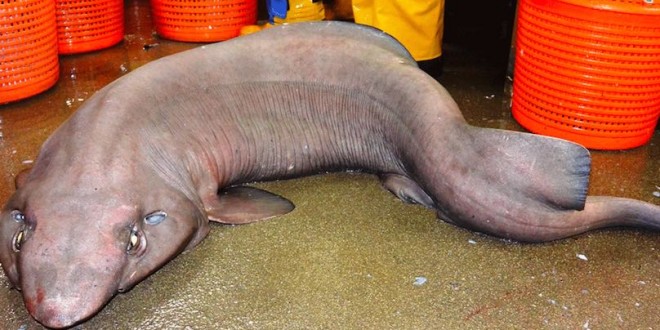‘Sofa shark’ found off the coast of Britain for the first time in a decade.
The false catshark, also known as a sofa shark, was found by scientists at the Scottish Shark Tagging Programme conducting a deep sea survey with Marine Scotland near the remote islands of Barra and St Kilda.
The Shark Tagging Programme said: “Finding strange and unusual looking elasmobranchs (subclass of sharks, skates and rays) in the deep sea is not uncommon but following a recent deep sea survey scientists from Marine Scotland noticed a species that they had not seen before. Following some careful research it was established that the fish (pictured to the right) was in fact a false catshark sometimes known as a sofa shark (Psuedotrakias microdon).
“This is not a species that has previously been found in Scottish waters and is a welcome addition to our list! Last year, in conjunction with Marine Scotland and Shark Trust, The SSTP compiled the first comprehensive list of Scottish elasmobranchs and this species now brings the total to an amazing 72!”
However, environment secretary Richard Lochhead said one sofa shark had been spotted before in 2000 by Marine Scotland scientists whilst they were carrying out a survey just north of Vidal Bank, within several miles of where the latest shark was found.
The recent shark was a female and weighed 60kg. Speaking to the Scotsman, Marine biologist Francis Neat said: “I was pretty surprised when it landed in our boat. We quickly measured and weighed it before sending it back into the water.”
According to Wikipedia, the false catshark (Pseudotriakis microdon) is a species of ground shark that has most commonly been recorded close to the bottom of the sea over continental and insular slopes, at depths of1,600ft to 4,600ft.
Reaching 9.8ft in length, this heavy-bodied shark can be readily identified by its elongated, keel-like first dorsal fin. It has long, narrow eyes and a large mouth filled with numerous tiny teeth. It is usually dark brown in colour, though a few are light grey.
With flabby muscles and a large oily liver, the false catshark is a slow-moving predator and scavenger of a variety of fishes and invertebrates.
This species typically gives birth to two pups at a time. The International Union for Conservation of Nature (IUCN) presently lacks sufficient data to assess the conservation status of the false catshark.
While neither targeted by fisheries nor commercially valuable, it is caught incidentally by longlines and bottom trawls, and its low reproductive rate may render it susceptible to population depletion.
Agencies/Canadajournal

 Canada Journal – News of the World Articles and videos to bring you the biggest Canadian news stories from across the country every day
Canada Journal – News of the World Articles and videos to bring you the biggest Canadian news stories from across the country every day


I like how it has just been “found” and it is already lying dead somewhere on the floor.